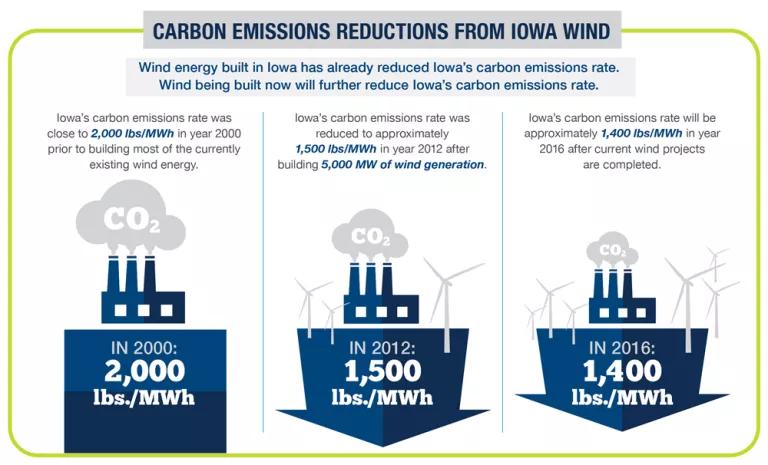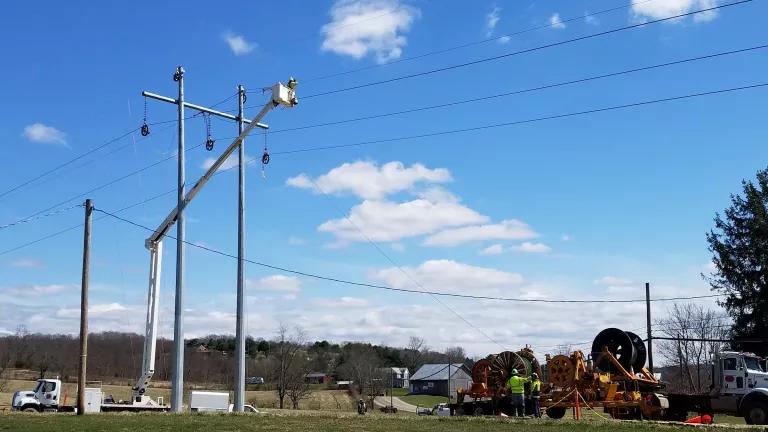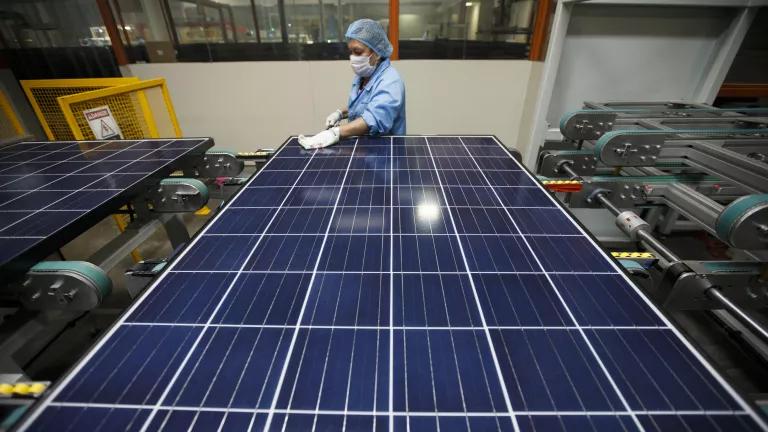IWEA Report Shows Iowa Breezing by Clean Power Plan Goals with Continued Commitment to Wind Energy

In certain circles, Iowa is becoming synonymous with wind. That's because the Hawkeye State already gets more than 28 percent of its electricity from clean, sustainable, home-grown wind power. As wind investments grow in the state, Iowa will move steadily closer to meeting and surpassing the modest goals set by the U.S. Environmental Protection Agency in its proposed Clean Power Plan, the first-ever limits on carbon pollution from existing power plants.
I've written about this topic before, but a recently-released report makes the point again: for Iowa, the Clean Power Plan is immensely achievable, partly because the target as proposed will require little-to-no additional effort and partly because we can meet EPA's goals and even far exceed them because of our wind resources and demonstrated interest in pursuing them.
The report from the Iowa Wind Energy Association, or IWEA, and co-authored by industry experts Dan Turner, Ph.D. and Tom Wind, P.E., looks at wind in Iowa from 2015 to 2030 and considers how it can contribute to meeting EPA's goal of reducing carbon emissions from Iowa's existing power plants. The average rate of carbon pollution from electricity generation in the state has dropped precipitously over the last decade. The IWEA report found that if Iowa continues to add wind at a very moderate rate - as little as 74 MW of wind every year - Iowa emissions will continue to drop and the state will easily meet its goal by 2030. To put this in context, Iowa wind has expanded by an average of 635 MW every year since 2008. (A typical coal plant is about 500 MW.)
Some more highlights from the report:
- Iowa can achieve the proposed 16 percent reduction in carbon pollution from existing power plants by 2030 by building a modest 2,300 MW more of wind, without doing anything else.
- 1,212 MW is under construction in Iowa at the moment.
- Just last week, MidAmerican Energy announced plans to build an additional 553 MW of wind energy in the state. Alliant also issued an RFP for 200 MW. That brings the MW under construction to 1,965, all coming online by the end of 2016.
- Is there anyone who thinks that we can't build 335 MW of wind in the 14 years that follow to meet our goal for 2030?
- Even if EPA sets a higher standard for Iowa of, say, a 30 percent reduction in carbon pollution from existing power plants, Iowa would still only need about 210 MW/year to be built over fourteen years. Again, to put this in context, there were over 1,000 MW under construction in the last couple of years and there are almost 2,000 MW planned for installation by the end of 2016.
The report also concludes that Iowa can help its neighbors to comply with their higher standards - and get paid handsomely in return:
- Just looking at Minnesota, Wisconsin, Michigan, Missouri, Illinois, Indiana, and Ohio, it would take about 17,000 MW of additional wind to meet 25% of all of their goals.
- All of those states and Iowa could meet all of their emission reduction goals with 71,000 MW of new Iowa wind.
Yes, this is primarily an intellectual exercise, but it clearly shows that Iowa wind, because it is so high in quality, is competitive with other states' wind and even fossil fuels. As a result, Iowa can build and sell additional wind energy beyond what is needed to meet Iowa's state goal. Demand from others states for affordable Iowa wind will rise, and Iowa wind exports will grow and bring additional revenue into the state. In addition, as the epicenter of wind resources and activity in the country, Iowa turbine manufacturers and other wind-related businesses help to meet the increased regional demand.
Wind is plentiful, cost-effective, dependable - that's why utilities like the Central Iowa Power Cooperative and MidAmerican Energy are making a concerted effort to expand its presence in their portfolios. During Berkshire Hathaway's shareholder meeting in Omaha this past weekend, holdings company Berkshire Hathaway Energy CEO Greg Abel said that upon completion of a recently announced investment in wind - the company's tenth - wind energy will make up 58 percent of MidAmerican's generation portfolio.

And the cost of all of this wind to meet the Clean Power Plan? As emphasized by utility filings with public service commissions, by DOE reports, and by experience, wind energy actually saves consumers money. Companies can plan 20 or 30 years out without worrying about fuel volatility. Landowners receive millions in lease payments for turbines. Consumers needn't pay for economically and environmentally costly fossil fuels. Utilities can sell renewable energy credits to other utilities in less resource-rich states. In its annual Empower U presentation, and as part of its environmental update, MidAmerican Energy showed the anticipated cost of meeting the EPA's proposed standards: because of Iowa's rich resources and past investments in wind, not a cent.

, 2014
Of course, Iowa actually has a whole toolbox full of options for meeting EPA's goals. We can expand and improve our utility efficiency programs, update building codes, institute appliance standards, encourage more solar installations, and more. By looking to a mix of efficiency and renewable energy in cutting carbon pollution, Iowa can continue to be protective, profitable, practical, and above all, pioneering.



